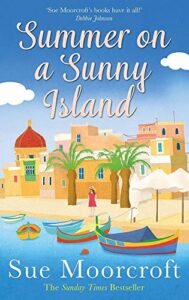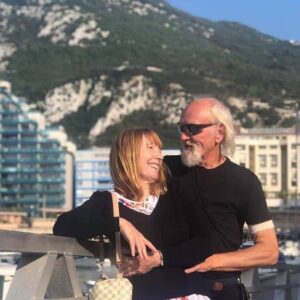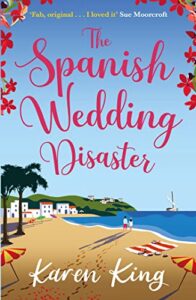A lens essay is a type of comparative paper that, instead of comparing two subjects, compares two different interpretations of one subject. When writing a lens essay, it is important to choose a text that has two different interpretations. These interpretations can be from different time periods, different authors, or even different schools of thought. The key to writing a successful lens essay is to use your own critical analysis of the texts to argue for the validity of one interpretation over the other.
There are a few steps you can take to ensure your lens essay is successful. First, it is important to have a clear understanding of both interpretations of the text. Second, you need to develop a thesis that takes a position on which interpretation is more valid. Finally, you must use evidence from the texts to support your position.
When writing your lens essay, be sure to:
1. Choose a text that has two different interpretations.
2. Develop a thesis that takes a position on which interpretation is more valid.
3. Use evidence from the texts to support your position.
Enhance your essay writing skills and boost your academic success with Trust Essay Writers. Our blog is dedicated to providing valuable tips, insights, and resources to help you become a confident and effective essay writer. Whether you’re struggling with essay structure, researching techniques, or polishing your writing style, our expert advice is here to guide you. Visit https://trustessaywriters.biz/ to access our wealth of knowledge and elevate your essay writing to new heights. Trust Essay Writers for all your essay writing needs.
Understanding the Purpose of a Lens Essay
A lens essay is a type of critical writing that focuses on a single text, poem, play, or work of art through the perspective of a particular idea, theory, or lens. The purpose of a lens essay is twofold: to explore the significance of the text under analysis and to articulate your own argument about that text.
When approaching a lens essay, it is important to keep in mind that you are not writing a traditional research paper. In a research paper, you would typically present a series of evidence to support your argument. In a lens essay, however, your goal is not to simply present evidence, but to critically engage with the text under analysis. This means that you will need to bring your own interpretation to the text and use evidence from the text to support your claims.
There is no one right way to approach a lens essay, but there are a few things that you should keep in mind as you write. First, it is important to select a text that you can find interesting and that you can find evidence to support your claims about. Second, you will need to develop a clear thesis statement that articulates your argument about the text. And finally, you will need to support your claims with evidence from the text itself.
If you are having trouble getting started on your lens essay, try brainstorming a few possible ideas. Once you have selected a text and a lens, you can begin to develop a thesis statement. Remember, your goal is not simply to summarize the text or to provide evidence, but to critically engage with the text and to develop your own argument.
Once you have developed a thesis statement, you can begin to gather evidence from the text to support your claims. As you read, take note of passages or quotes that you think could be helpful in supporting your argument. When you have gathered enough evidence, you can begin to organize your essay.
When organizing your lens essay, it is important to keep your argument in mind. Begin by introducing your text and your lens, and then present your thesis statement. After your thesis statement, you can provide evidence from the text to support your claims. Finally, conclude your essay by reaffirming your argument and showing how your evidence supports your claims.
Remember, a lens essay is not a research paper. You are not simply presenting evidence, but critically engaging with the text under analysis. By approaching the text from a particular perspective, you can bring new insights and interpretations to the text. By developing a clear argument and supporting it with evidence, you can write a successful lens essay.
Selecting a Primary Text and Secondary Source
A lens essay is a type of comparative paper that, instead of comparing two subjects, compares a single subject against a secondary text. The purpose of a lens essay is twofold: to demonstrate your critical reading and writing skills, and to reveal your ability to analyze a complex text through the lens of another text.
In order to write a successful lens essay, you must first choose an appropriate primary text and secondary source. The primary text is the work that you will be using as your lens; it is the work through which you will interpret the secondary source. The secondary source is the work that you will be using as your main point of reference; it is the work that you will be interpreting through the lens of the primary text.
When choosing your primary and secondary texts, there are a few things to keep in mind. First, the texts should be from different genres (e.g., you wouldn’t want to compare a novel to a non-fiction work). Second, the texts should be of different lengths; a short story would not be an appropriate primary text if your secondary source is a full-length novel. Third, the texts should be from different time periods; it would be difficult to compare a contemporary work to a work from the Victorian era, for example.
Once you have selected your primary and secondary texts, you are ready to begin writing your lens essay. The first step is to read both texts carefully, taking note of any passages or ideas that stand out to you. As you read, you should also be thinking about how the two texts might be connected; what are the similarities and differences between them? What is it about the lens text that makes it a good tool for interpreting the secondary text?
After you have finished reading both texts, it is time to start writing your essay. The first step is to write a thesis statement; this should be a single sentence that sums up the overall point you will be trying to make in your essay. For example, your thesis statement might be “In ‘The Great Gatsby,’ Fitzgerald uses the character of Jay Gatsby as a lens through which to critique the empty materialism of the 1920s.”
Once you have written your thesis statement, you can start to develop your argument. In your body paragraphs, you will want to discuss how the lens text sheds light on the secondary text. What does the lens text reveal about the secondary text that we might not have been able to see otherwise? How does the lens text help us to understand the themes and ideas of the secondary text in a new way?
When you are writing your essay, be sure to support your claims with evidence from both texts. Quotations from the texts will help to illustrate your points, and will also show that you have read both texts closely. In addition, you should also make sure to explain how your evidence supports your thesis statement; simply quoting a passage from the text is not enough, you must also explain why that passage is significant.
A lens essay can be a challenging, but ultimately rewarding, assignment. By carefully selecting your texts and developing a well-supported argument, you can use the lens essay to reveal new insights into familiar works.
Analyzing and Interpreting the Primary Text
A lens essay is a type of close reading that focuses on a single text or group of texts. Unlike other forms of close reading, a lens essay requires that you not only analyze the text (or texts) in question, but also interpret it in light of another text, typically one that is considered to be a classic or canonical work.
The idea behind a lens essay is that you take a single text and use it as a lens through which to view another text. In other words, you use the first text to shed light on the second text. The lens text can be either shorter or longer than the target text, but it should be of a similar genre (e.g., if you’re writing about a novel, you would use another novel as your lens).
To write a successful lens essay, you’ll need to do the following:
1. Choose a target text and a lens text.
2. Read both texts closely, taking careful notes.
3. Develop a thesis about how the lens text illuminates the themes, ideas, or characters in the target text.
4. Write an essay in which you analyze the target text using the lens text as a guide.
When choosing a target and lens text, look for works that share common themes, ideas, or characters. For example, if you’re interested in the theme of love in Romeo and Juliet, you could use another Shakespeare play, like A Midsummer Night’s Dream, as your lens. Or, if you’re interested in the character of Hamlet, you might use another character-driven play, like Macbeth, as your lens.
Once you’ve chosen your texts, read them both closely, taking careful notes. As you read, think about how the lens text sheds light on the target text. What themes, ideas, or characters do they share? How do they differ? What does the lens text reveal about the target text that you might not have noticed otherwise?
Once you’ve considered these questions, you should be ready to develop a thesis about how the lens text illuminates the target text. Your thesis should be specific, and it should make an argument about how the lens text helps us to understand the target text in a new or different way.
Finally, write an essay in which you analyze the target text using the lens text as a guide. In your essay, be sure to discuss both the similarities and the differences between the two texts. How do they illuminate each other? What can we learn from looking at the target text through the lens of the other?
A lens essay can be a challenging, but ultimately rewarding, exercise in close reading and interpretation. By using one text to shed light on another, you can gain a deeper understanding of both.
Exploring the Lens or Theoretical Framework
When you are asked to write a lens essay, you will be asked to analyze a particular text through a specific lens. This may be a literary work, a film, a political document, or anything else that can be looked at in different ways. In order to write a successful lens essay, you will need to have a strong understanding of the text you are analyzing and the lens through which you will be viewing it.
There are a few steps you can take to ensure that your essay is successful. First, it is important that you have a clear thesis statement that outlines the main argument of your paper. Next, you will need to provide a detailed analysis of the text, using evidence from the work itself to support your claims. Finally, you will need to discuss the implications of your analysis and how the work can be interpreted in different ways.
If you follow these steps, you will be well on your way to writing a successful lens essay. Remember to stay focused on your argument and to use evidence from the text to support your claims. With a little practice, you will be able to write a lens essay that explores the different ways a text can be interpreted.
Identifying Points of Convergence and Divergence
In a lens essay, two texts are brought into conversation with one another in order to shed new light on each. The lens essay typically employs a theoretical text as a lens and uses it to examine a more concrete text. In this way, the lens essay brings together two texts that may initially seem quite different in order to explore a larger issue.
There are a few things to keep in mind when writing a lens essay. First, it is important to identify the points of convergence and divergence between the two texts. Convergence occurs when the texts share something in common, while divergence occurs when the texts differ from one another. It is important to note both the points of convergence and divergence, as they will inform your reading of the texts.
Next, it is important to situate the texts within a larger context. What is the historical moment in which the texts were written? What are the larger issues at play that the texts address? By situating the texts within a larger context, you can begin to see how they speak to one another.
Finally, it is important to bring your own critical lens to the texts. What are you hoping to learn by bringing these texts into conversation with one another? What new insights can you glean from this conversation?
By keeping these things in mind, you can write a strong lens essay that brings two texts into conversation with one another in order to explore a larger issue.
Crafting a Clear Thesis Statement
A thesis statement is a sentence or two that states the main argument of your essay. It tells your readers what you’re going to be discussing in the paper and helps to keep your writing focused. In a lens essay, your thesis statement will typically be located at the end of your introduction.
There are a few things to keep in mind when crafting your thesis statement for a lens essay:
1. Make sure that your thesis statement is clear and concise.
2. Be sure to take a position on the issue at hand. A lens essay is not simply a summary of another text.
3. Be sure that your thesis statement is arguable. In other words, it should be something that someone could reasonably disagree with.
4. Keep in mind that your thesis statement will likely be one of the first things that your readers encounter in your paper. As such, it’s important to make sure that it is well-crafted and pack a punch.
With these things in mind, let’s take a look at a few examples of thesis statements for lens essays.
Example 1:
“In ‘The Great Gatsby,’ F. Scott Fitzgerald uses the lens of Jay Gatsby to explore the issue of the American dream.”
In this thesis statement, we can see that the author has taken a position on the issue at hand (the American dream) and that they are using the character of Jay Gatsby as a lens through which to examine it. This is a strong thesis statement that is arguable and provides a clear focus for the rest of the essay.
Example 2:
“Though ‘The Catcher in the Rye’ is often seen as a coming-of-age story, Holden Caulfield’s lens reveals a much darker view of adolescence.”
This thesis statement also takes a position on the interpretation of the novel, in this case arguing that it should be seen as a darker story than is typically assumed. Again, the use of Holden Caulfield as a lens is key to this interpretation.
Example 3:
“Through the lens of Scout Finch, Harper Lee’s ‘To Kill a Mockingbird’ challenges the idea that justice is always served.”
This thesis statement argues that the novel is not a simple story of justice being served, as is often assumed, but instead uses the character of Scout Finch to challenge this idea.
These are just a few examples of thesis statements for lens essays. In each case, the thesis statement takes a position on the interpretation of the text and uses the lens character to support this interpretation.
If you’re having trouble crafting a strong thesis statement for your lens essay, remember to keep these things in mind: take a position on the issue, make sure your thesis is arguable, and focus on creating a strong, punchy statement that will grab your reader’s attention.
Integrating Evidence and Examples
A lens essay is a type of critical writing that focuses on a particular text or piece of artwork through the lens of a critical theory or approach. In other words, a lens essay provides a critical interpretation of a given text or artwork by using a particular theoretical framework or lens.
There are a number of different ways to approach writing a lens essay, but regardless of approach, there are a few key elements that all lens essays should include. First and foremost, a lens essay must provide a thesis statement that states the overall argument or interpretation that the essay will be providing. This thesis should be based on a close reading of the text or artwork in question and should make use of evidence and examples from the text or artwork to support the thesis.
In addition to a thesis statement and evidence-based support, a lens essay should also include a discussion of the implications of the argument or interpretation. What does this argument or interpretation mean for our understanding of the text or artwork in question? What are the larger implications of this argument or interpretation? These are the kinds of questions that a lens essay should seek to answer.
If you are interested in writing a lens essay, there are a few things that you will need to keep in mind. First, you will need to choose a text or artwork to focus on. It is important to choose a text or artwork that you are familiar with and that you feel confident in your ability to interpret. Second, you will need to choose a critical theory or approach to use as your lens. There are many different critical theories and approaches that can be used, so it is important to choose one that you are familiar with and that you think will help you to interpret the text or artwork in question in a new and interesting way.
Once you have chosen a text or artwork to focus on and a critical theory or approach to use as your lens, you will need to close read the text or artwork in question. As you close read, you should be looking for evidence and examples that you can use to support your thesis statement. Once you have gathered this evidence, you can begin to formulate your argument or interpretation.
Once you have formulated your argument or interpretation, you should then turn your attention to the implications of this argument or interpretation. What does this argument or interpretation mean for our understanding of the text or artwork in question? What are the larger implications of this argument or interpretation? These are the kinds of questions that you should seek to answer in your lens essay.
If you keep these key elements in mind, you should be well on your way to writing a successful lens essay.
Writing a Comparative Analysis
A comparative analysis essay is an essay that compares two or more subjects. These subjects can be related to each other, or they can be completely different. For example, you might compare two different theories, or two different works of literature.
When writing a comparative analysis essay, you need to first identify the similarities and differences between the subjects you are comparing. Once you have done this, you can then start to write your essay.
There are a few different ways that you can structure your comparative analysis essay. One way is to simply list the similarities and differences between the subjects. Another way is to start with a general introduction, and then move on to discuss the similarities and differences between the subjects.
Whichever way you choose to structure your essay, make sure that each paragraph focuses on one particular point. Also, make sure to use evidence from both subjects to support your points.
If you are having trouble getting started, try brainstorming a list of the similarities and differences between the subjects you are comparing. Once you have this list, you can then start to create your essay outline.
If you need help writing your comparative analysis essay, there are a few places you can turn to for assistance. First, you can speak to your professor or TA. They will be able to give you some tips on how to get started.
You can also find a number of resources online that can help you write your essay. There are a number of websites that offer essay writing tips, and there are also a number of essay writing services that you can use.
Remember, when writing your comparative analysis essay, it is important to first identify the similarities and differences between the subjects you are comparing. Once you have done this, you can then start to write your essay. Use evidence from both subjects to support your points, and make sure to structure your essay in a way that makes it easy to follow.
Concluding with a Critical Evaluation
A lens essay is a type of analytical essay that focuses on a particular text or piece of media. In order to write a successful lens essay, you must have a clear thesis, an engaging introduction, and a well-organized argument.
Your thesis should be a statement about how the text or media you are analyzing reflects a larger issue or theme. For example, you could argue that the novel you are studying reflects the social ills of its time period.
Your introduction should give your reader a clear sense of your argument. It should also explain why you have chosen to focus on this particular text or piece of media.
Your argument should be well-organized and supported by evidence from the text or media you are analyzing. Be sure to use specific examples to illustrate your points.
Your conclusion should summarize your argument and offer a critical evaluation of your evidence. It should also explain how your analysis contributes to our understanding of the larger issue or theme you were exploring.























